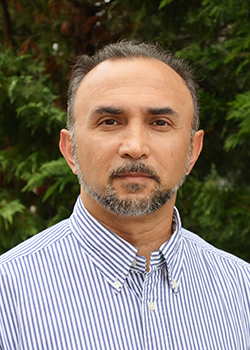| Date | Time | Room | Presenter | Affiliation |
|
30/9/2019 |
11:00 – 13:00 |
Seminar room 7 |
Kamran Etemad | University of Maryland, FCC and 5G-Courses.com |
|
Abstract The novel design of 5G New Radio (NR) air interface on one side and the demand for wider ranges and more types of spectrum access for different verticals and use cases on the other side provides both urgencies and opportunities to realize spectrum reuse through active/passive sharing and coexistence. This tutorial provides a technical overview of key technology components in 5G standards which facilitate spectrum reuse and sharing both within and across different categories of wireless systems. Features such as flexible time and frequency structure and bandwidth parts, resource reservations, Remote Interference Management and NR-unlicensed will be discussed. Also prospect of spectrum reuse between access, back-haul and front-haul and also non-terrestrial networks will be treated. In addition, we will discuss how the 5G NR technical solutions may fit within current and emerging spectrum sharing regulations. Speaker
Kamran Etemad: is a principal wireless technology, strategy and standards expert. He is currently a senior technical advisor at Federal Communications Commission and also Adjunct Faculty at University of Maryland. Previously he has held various senior technical and management positions as director of technology standards at Intel Corporation, as executive technology advisor with Sprint-Nextel and Vice President of Advanced technology and Strategy at WFI. Kamran received his Ph.D. degree in Electrical Engineering from University of Maryland in 1996. He has conducted many industry workshops, panels and seminars and published numerous technical papers and two books on 3G/4G systems. He holds more than 80+ issued patents and 30+ more pending all in 3G/4G/5G wireless systems. Dr. Etemad’s current area of focus is on novel dynamic spectrum sharing both from regulatory and technical perspectives. His most recent research has been on advanced technologies based on 3GPP-LTE/NR and WiFi and their cooperation in CRAN and small cells deployment, for opportunistic spectrum aggregation, local group and broadcast communication and interference management. |
||||

